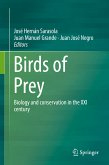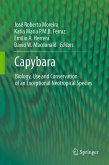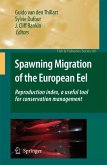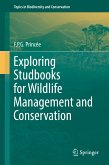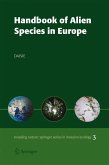The book will cover the entire range of the Painted Stork--beyond its stronghold in India and Sri Lanka to other countries--E Asia as well. For the sake of comparison, relevant information will be included about the other species of storks--both solitary as well as colonial, of Asia, as well as those in other parts of the world. Certainly plenty of references will be made about the work done on the American Wood Stork.
Studies are underway in order to better understand the role of the monsoon rains on the nesting pattern of Painted Stork, besides attempting a review of the global status of the species. The former is likely to be of interest in augmenting our understanding about how global climate change is going to affect birds across India and the second is likely to raise interesting points about the distribution of species and their ranges. Both these studies will be carried through 2009 and should hopefully be included in the proposed book.
Naturally, the focused interest in field research on the Painted Stork has resulted in accumulation of considerable information on this particular species, which is beyond the information contained on some standard Indian and international works and ornithological texts.
The author hopes to include the entire spread of information of this species--from its systematics, evolution, distribution, ecology to its role in human culture as well as its association with mythologies. In other words, topics have not been restricted to the areas of the author’s research but have spilled over into areas of anthropology, ecology, conservation, etc.
Studies are underway in order to better understand the role of the monsoon rains on the nesting pattern of Painted Stork, besides attempting a review of the global status of the species. The former is likely to be of interest in augmenting our understanding about how global climate change is going to affect birds across India and the second is likely to raise interesting points about the distribution of species and their ranges. Both these studies will be carried through 2009 and should hopefully be included in the proposed book.
Naturally, the focused interest in field research on the Painted Stork has resulted in accumulation of considerable information on this particular species, which is beyond the information contained on some standard Indian and international works and ornithological texts.
The author hopes to include the entire spread of information of this species--from its systematics, evolution, distribution, ecology to its role in human culture as well as its association with mythologies. In other words, topics have not been restricted to the areas of the author’s research but have spilled over into areas of anthropology, ecology, conservation, etc.
From the reviews:
"Focusing on the Painted Stork (Mycteria leucocephala), this book provides a thorough compilation of the knowledge of this relatively well-studied species. ... As a compilation of several decades of observations and studies of the Painted Stork, this book provides important comparative behavioral/ecological/physiological information for all interested in this or related species. Given the detail and background descriptions of various topics (e.g., coloniality), this book is a nice read for all ornithologists and conservationists, regardless of their region or species of interest." (Larry Bryan, Waterbirds, Vol. 36 (1), 2013)
"A book written not just for full professionals but also for the young who are interested in birds and want to learn about basic natural history, for those interested in Painted Storks, in waterbirds more generally, and in Indian ornithology. ... Urfi describes in detail the biology of the Painted Stork in India. ... The Painted Stork is a delighted book." (Malcolm C. Coulter, IBIS - The International Journal of Avian Science, Vol. 154, 2012)
"Focusing on the Painted Stork (Mycteria leucocephala), this book provides a thorough compilation of the knowledge of this relatively well-studied species. ... As a compilation of several decades of observations and studies of the Painted Stork, this book provides important comparative behavioral/ecological/physiological information for all interested in this or related species. Given the detail and background descriptions of various topics (e.g., coloniality), this book is a nice read for all ornithologists and conservationists, regardless of their region or species of interest." (Larry Bryan, Waterbirds, Vol. 36 (1), 2013)
"A book written not just for full professionals but also for the young who are interested in birds and want to learn about basic natural history, for those interested in Painted Storks, in waterbirds more generally, and in Indian ornithology. ... Urfi describes in detail the biology of the Painted Stork in India. ... The Painted Stork is a delighted book." (Malcolm C. Coulter, IBIS - The International Journal of Avian Science, Vol. 154, 2012)


